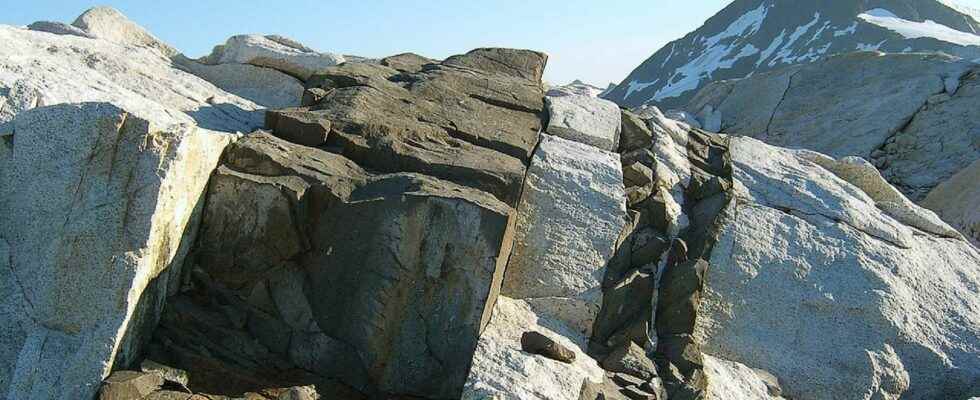Dykes are intrusions of igneous rocks within the Earth’s crust. Unlike the plutos, which form massive sets, the dykes are in the form of veins which cut the rocks of the surrounding rock. This stratigraphic characteristic differentiates them from sills, which are also vein type intrusions but which follow the stratification of sedimentary layers.
An injection of magma within the crust
The emplacement of a dyke is therefore associated with a magmatic episode. From the deep reservoir, the magma will be injected into pre-existing cracks. Under the effect of pressure of liquid magmatic, this crack will open and be filled by the magma which will crystallize there. However, the speed the progression of the magma within the crack must be fast enough to avoid too rapid crystallization in contact with the cold surrounding rocks, which would have the effect of immediately “plugging” the fracture.
Some dykes thus show emplacement speeds of the order of one meter per second. In this context, dykes often represent magma channels to the surface. Their presence is therefore often associated with a volcanic episode and a surface eruption, but not always.
The size and thickness of the dykes are highly variable. While some are only a few centimeters thick, others can reach several meters and stretch for kilometers. They can be found singly or in swarms. The injection of magma within a fracture will produce a deformation in the surrounding rock, then generating a network of cracks which themselves fill with magma. These secondary and less important dykes will be organized radially or annularly around the main dyke.
Dykes in the landscape
The igneous rocks composing the dykes are generally more resistant than the host rocks which can for example be sedimentary rocks. Erosion, by preferentially abrading these soft rocks, will thus make it possible to expose certain dykes, which will then appear in the landscape in the form of large walls linear and continuous. The Tooth of Grudge in the The Massif Central is an example of a dyke exposed by erosion.
The study of the dykes provides a lot of information on the nature and composition of the magma, on its depth of emplacement, on the speed of injection and on the age of the magmatic event. They provide a better understanding of the evolution of magmatic and volcanic systems, particularly with regard to the tectonic processes with which they are often associated.
Right now, receive the Mag Futura for free by subscribing to our subscriptions!
Did you know that you can access Futura without ads via our subscriptions?
At the moment, you can discover this advantage with our special offer: subscribe to the subscription “I participate in the life of Futura” (for a minimum of 3 months) and receive the Mag Futura at home* (worth €19)!
*Mag Futura is sent after the third month of registration.
You will also be interested
[EN VIDÉO] How does magma form before a volcanic eruption? Magma is the origin of the formation of volcanoes. This molten rock, which bubbles up in the crater, comes from a partial melting of the Earth’s mantle. Futura met Jacques-Marie Bardintzeff, doctor in volcanology, who tells the origin of magma.
Interested in what you just read?

